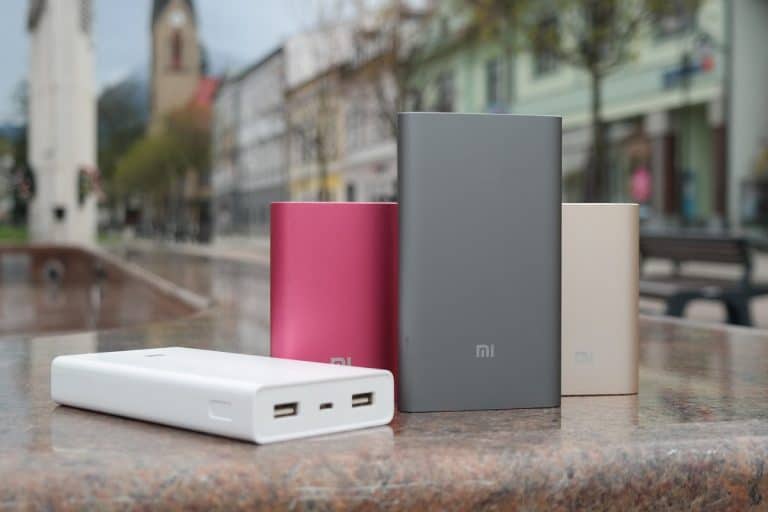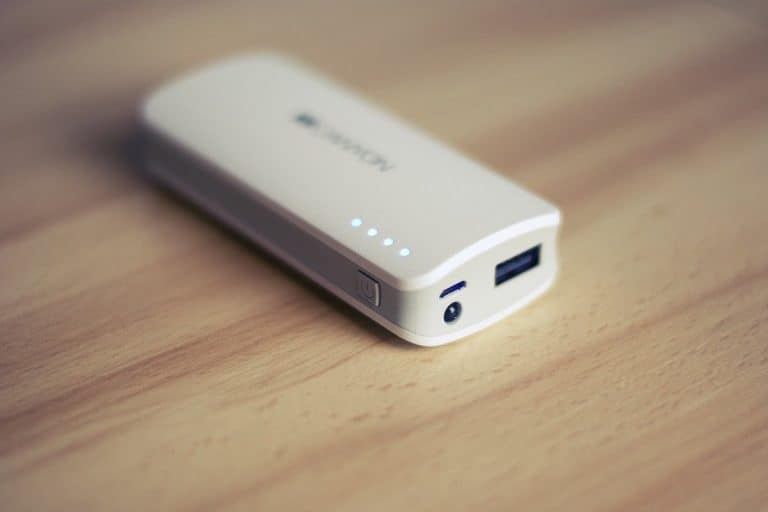Do Power Banks Stop Charging when Full?
New power banks stop charging when full. Recent-model power banks provide improved capacity and safety features that stop charging when the device is fully charged. While some older unbranded generics had a reputation for overheating when fully charged, battery technology has advanced rapidly to meet expanding mobile market demands.
Power banks have become a standard piece of digital equipment in the age of the “internet of things” — the interconnectedness via the internet of computing devices embedded in everyday objects that enables them to send and receive data.
This article will explore some of the truths and untruths surrounding power bank technology, what happens when they reach a full charge, and how this handy pocket-sized device keeps us connected when we’re on the move.
Power Banks in the Internet of Things
Central to the usefulness and function of all digital devices is a source of power. A power bank — also called a mobile rechargeable battery, battery pack, or portable charger — is just that: a portable power source for when your device runs out of power.
The digital devices that we’re referring to include the smaller battery-powered devices such as mobile phones, tablet computers, lights, small fans, and external digital camera battery chargers.
The power bank itself has a built-in rechargeable battery that can be charged through a USB port. USB stands for Universal Serial Bus, a term that refers to a cable that connects a device to a power supply.
It is “universal” because it conforms to a standard set of protocols established by the industry that defines the interface (connections and communication) between computers, peripherals, and other computers.
Peripherals may be classified as input devices, such as a mouse and keyboard; output devices, such as monitors and printers; or input/output devices, such as hard drives, flash drives, and power banks.
Charging Protocols
As with any electronic device, certain safety issues surround batteries and chargers that need to be mitigated. One of the most significant is that of proper charging methods, and this can be mitigated by what is known as the charging protocol.
The charging protocol determines how much voltage or current a battery can absorb, for how long, and what happens when the charge is complete.
Some types of batteries can tolerate overcharging; in other words, they can continue to be “on charge” even after the battery has been fully charged. Other batteries must be disconnected from the charging source when fully charged, at the risk of being damaged through overheating or even exploding.
The damage resulting from overcharging some batteries is usually limited to a reduced capacity or reduced lifespan of the battery.
However, following the old saying, “you get what you pay for,” it is best to invest in a reputable branded power bank that may incorporate temperature or voltage sensing circuits to determine the state of charge and which will provide a cut-off when the battery is full (source).
Myths and Legends About Electrical Charging
The rapid advance in battery technology has addressed most of the concerns that people had about the dangers of leaving your phone or other devices on charge for long periods. Nevertheless, there are still some side effects of prolonged charging with some battery types.
Power banks contain one of two battery types: lithium-ion and lithium-polymer.
Lithium-ion batteries have a higher energy density than their alternative lithium-polymer batteries. This means that they can store more electrical charge depending on size and volume. Also, lithium-ion batteries are usually less expensive. For this reason alone, they tend to be more popular.
Lithium-polymer batteries, on the other hand, tend to be lighter and more flexibly robust in construction, with an enhanced safety of operation. But they have a lower energy density and a shorter lifespan. While they tend to be less prone to explosion, they are more expensive to manufacture than their lithium-ion counterparts.
Most power banks, like your mobile phone, incorporate a lithium-ion battery, and there are a few precautions to watch out for when charging and discharging them.
Firstly, batteries do age. This is dependent mostly on the number of times that they are charged and discharged. However, even the cheaper power banks will have a battery that can handle around 500+ recharge cycles, which means that you’ll probably want to replace your phone and charger before the battery is ready for replacement.
Additionally, how long your power bank retains its change will, of course, depend on usage, but also on the quality of the power bank itself. A decent power bank may hold a charge for up to six months, while a poorer quality device may lose its stored power after just a month.
All batteries achieve optimum service life when operated at an ambient room temperature of about 68℉ or slightly below. Cycle life drops to half at a warm 1130F and at a frigid -40F (source).
Much debate and misinformation surround whether you should fully charge and discharge a power bank’s battery. Again, this depends to some extent on the type of and quality of battery installed.
Current technology indicates that lithium-ion batteries last longest when frequently charged up to between 30% and 80% of their capacity.
Fully discharging the battery has little effect on its ability to keep a charge. Most batteries manufactured post-2018 are equipped with internal sensors to prevent so-called overcharging and full discharging.
They also come with safety features, including short-circuit protection, output overvoltage protection, and protection from output overcurrent. The bottom line is that fully charging or discharging a battery has little impact on its lifespan. Battery life is most directly related to the number of charge cycles.
It is also worth mentioning the process that happens when using a device while it’s on charge and the concept of pass-through charging.
Pass-through charging occurs when you have a mobile device plugged into a power bank plugged into a wall socket (per my previous post.) Is it a good idea to kill two birds with one stone and charge your power bank while simultaneously charging your phone?
Assuming your power bank allows this facility, as a short-term solution to juicing up both devices if you’re in a hurry, this practice shouldn’t do any harm. However, excess heat is harmful to any battery, and the longer your devices stay charging, the more heat they will generate.
Finally, since your mobile is eating up some of the charge normally reserved for the power bank charging, the latter will also take longer to charge up fully, and this may extend the normal charge time. I don’t recommend that you do this too regularly or for too long.
Are All Power Banks Equal?
Power banks come in numerous shapes and sizes, usually defined by the device’s battery type, capacity, and output. Choosing the best fit to keep connected and charged up is about matching your requirements to the power bank features (source).
Power bank capacity is measured in milliamp hours, or mAh, the unit of measurement for electric power in batteries. The mAh indicates how much charge the battery can hold and how long it can power another device before recharging.
If your mobile phone has a battery with 2000 mAh, for example, you will want a power bank with at least that same capacity or a bit more because some capacity will always be lost in the process. In this way, you will be sure of at least one full recharge for your phone (source).
Today’s power banks come in storage capacities ranging from about 2,500 mAh to 20,000 mAh. But, if you’re planning on using the power bank when traveling, be aware that airlines have restrictions on the size of portable batteries that are allowed as cabin luggage.
Power banks usually have three characteristics. They can usually either charge in a fairly short period of time, say 15 minutes, or gently without generating too much heat. The third characteristic is that they charge fully, topping off to 100% charge, but it is uncommon for one power bank to incorporate all three of these characteristics at once.
This is where a “trickle charge” facility comes in handy, especially if you’re prepared to put your device on charge overnight, which is the recommended method. A good power bank will quickly boost your device up to about 85% charge capacity and then slowly top off the remaining capacity in order to reach a full charge.
Final Thoughts
A good quality power bank can be kept fully charged in your pocket or purse, ready to connect to your device at a moment’s notice. Keeping both devices, your mobile device, and power bank, on charge overnight is not going to harm either as today’s devices are designed to take a full charge and then switch off.
In an increasingly digital world, there is a requirement for us to stay connected 24/7. Keeping our electronic devices powered up is a given, but for those times when you can’t stop to plug your phone into a wall socket, the portable power bank is the handy solution.







